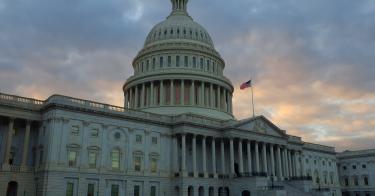The Senate’s confirmation plate will be full when Congress returns next week. A total of 309 nominees, 237 to executive branch positions and 72 to judicial posts, are pending in various committees or on the full Senate’s executive calendar.
Of those 309 pending nominees, 176 have cleared the relevant committees and are waiting for confirmation. By comparison, a total of 136 nominees were on the full Senate’s calendar at this same point during the previous five administrations — combined.
Democrats have forced the Senate to take a separate vote to invoke cloture, or end debate, 148 times on President Trump’s executive and judicial-branch nominees. By comparison, the Senate took a total of 30 cloture votes on all nominees during the same period during the previous seven administrations — combined.
One more point of comparison. Democrats have forced the Senate to take a cloture vote before confirming 63 percent of Trump’s judicial nominees. By comparison, the Senate took a cloture vote on fewer than 6 percent of all judges confirmed since 1949, when the Senate amended its cloture rule.
Please don’t let your eyes glaze over at these numbers. It’s one thing to accuse Democrats of obstruction; it’s another to prove it. No matter how you spin it, no matter the misdirection or propaganda circulating out there, the facts are the facts. Democrats are, by orders of magnitude, interfering with Trump’s ability to exercise his constitutional authority to make appointments far more than either party has done for past presidents.
Before the current recess, Senate Republicans took one of the Democrats’ obstruction tactics off the table. The Senate’s cloture rule says that debate can continue for up to 30 more hours, even after the Senate has voted to end it. During President Obama’s first term, confirmation followed cloture by only a few hours nearly half the time; since Trump took office, that is down to just 27 percent.
Republicans lowered the cap on post-cloture debate to two hours for most executive and judicial-branch nominees. Don’t believe the lie that this is the only time that senators may debate these nominees. Remember, the Senate has already voted to bring debate to a close. This post-cloture time is the very last segment of a very long process, often lasting more than a year after a nomination is made.
Sixteen percent of the federal judiciary is currently vacant, and that figure jumps to nearly 18 percent when you consider the known imminent vacancies. This is the longest period of triple-digit vacancies since 1991. Many executive-branch agencies and departments are similarly not yet fully staffed.
Democrats are playing this obstruction game, it seems, for sport, simply to add another front on which to fight Trump. But this “game” is hobbling the judicial and executive branches. The partisan ends do not justify these destructive means.
This piece originally appeared in National Review




